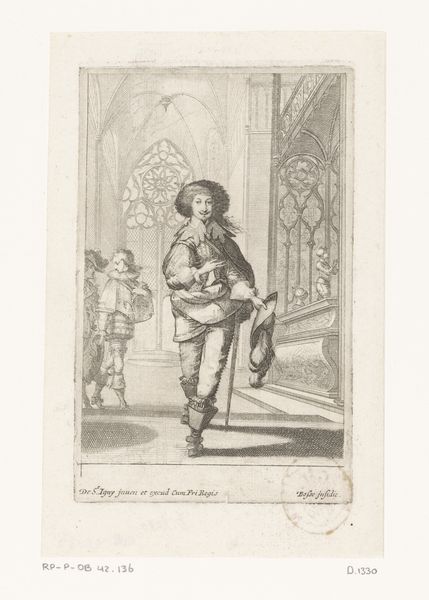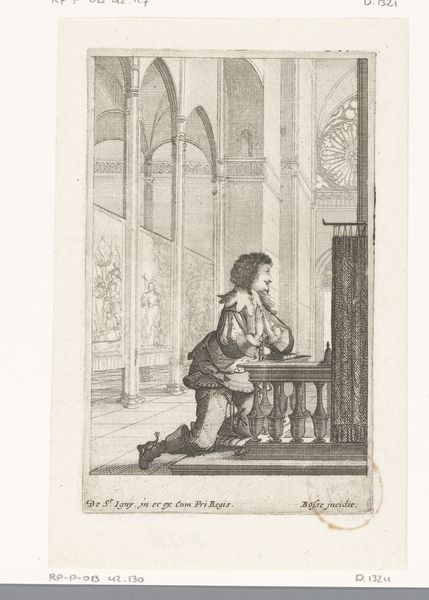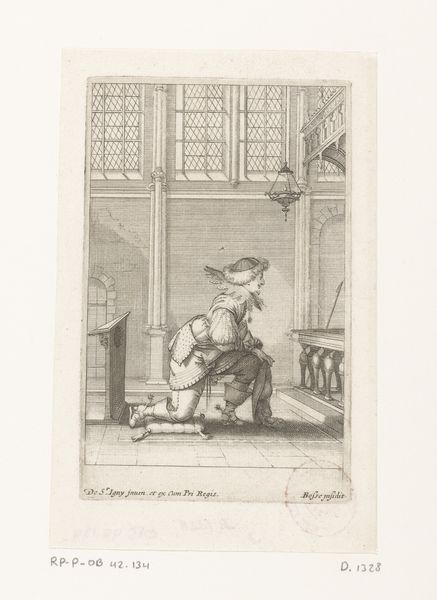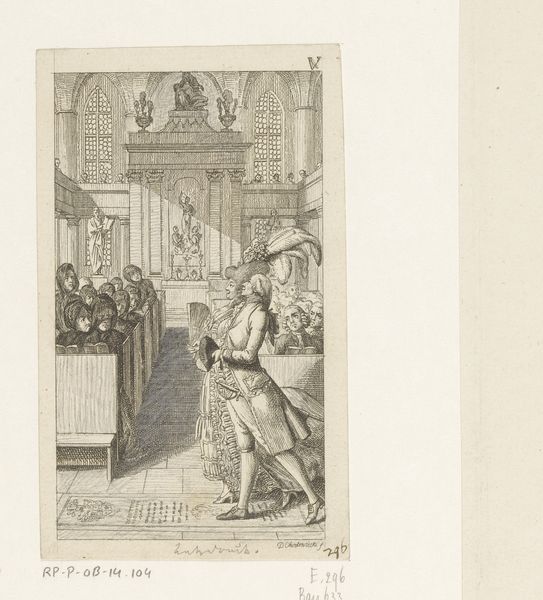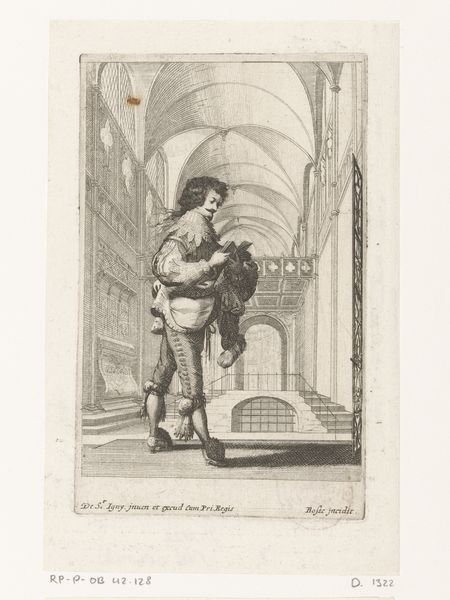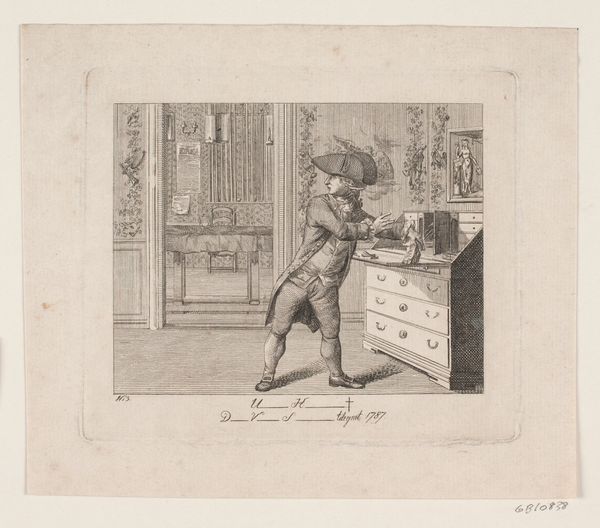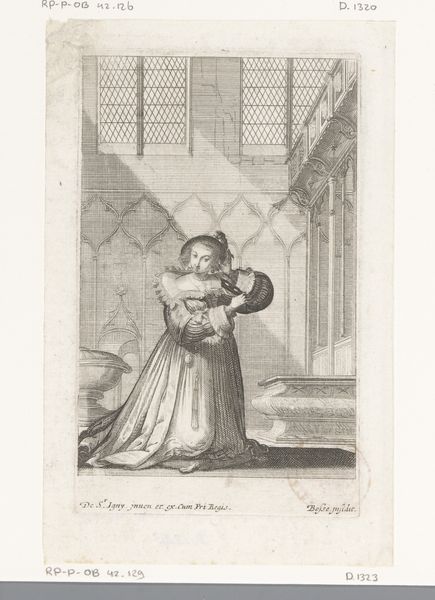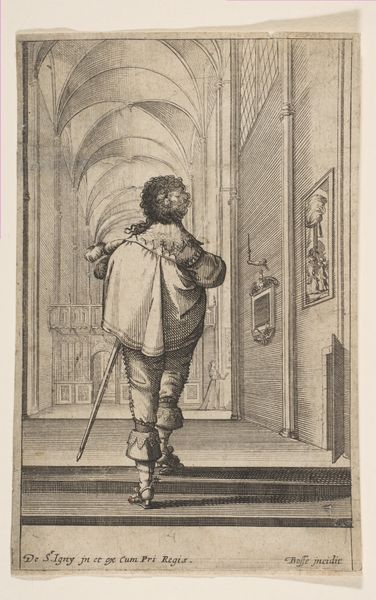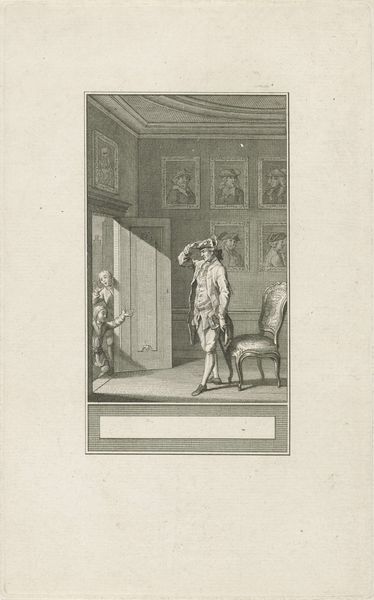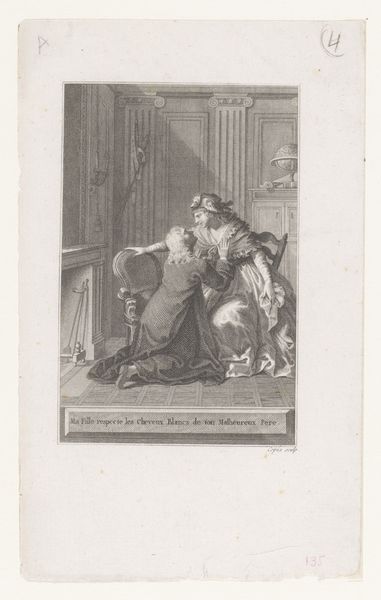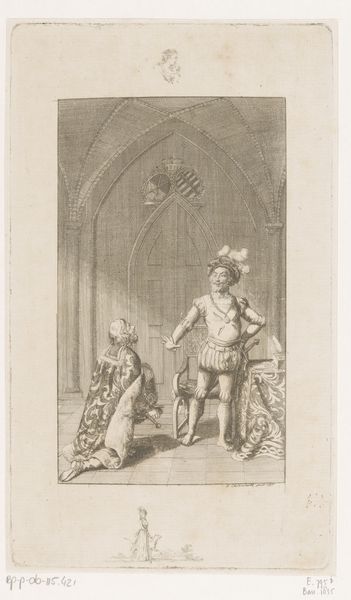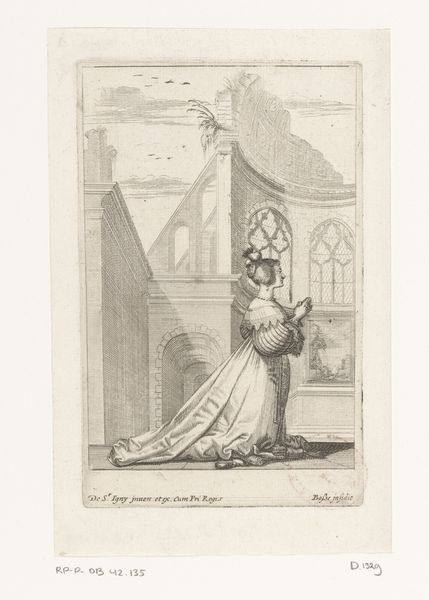
La Noblesse Française à l’église (De Franse adel in de kerk) c. 1628 - 1629
0:00
0:00
print, engraving
#
portrait
#
baroque
# print
#
genre-painting
#
engraving
Dimensions: height 154 mm, width 96 mm
Copyright: Rijks Museum: Open Domain
Curator: Let’s turn our attention to “La Noblesse Française à l’église,” or "The French Nobility at Church," an engraving made by Abraham Bosse around 1628 or 1629. It's held here at the Rijksmuseum. Editor: My first thought is about the performative aspect here. The nobleman, quite self-consciously posed against that soaring church architecture... It speaks to status. Curator: Precisely. Consider the social context. Bosse was meticulously documenting the clothing, manners, and spaces of the French aristocracy under Louis XIII. This print is about portraying, and perhaps subtly critiquing, that very public display of noble identity. Engravings like this circulated widely, shaping perceptions and fueling fashion trends. Editor: I am drawn to his elaborate outfit. It looks like there are swords dangling off of his waist. All those details - the high collar, puffed sleeves, ornate shoe rosettes–it reads as symbols of privilege and social performance. The weight of such material can affect identity. Curator: And notice the church itself. The towering gothic arches, stained-glass windows implied by the grid, it acts as a backdrop, legitimizing this performance of nobility. It shows power structures playing out on several levels. Editor: It's more than just showing it; the building speaks about God and Country and their alignment under his fancy outfit. And again with the shoes and their rosettes - not very practical for everyday life. Those could be difficult to acquire for someone less rich. Curator: What fascinates me is the printmaking process itself. Think of the skilled labor and specialized tools needed to create those delicate lines and textures on the copper plate. This print made the habits of the elite accessible to those outside their closed circle. How revolutionary. Editor: Yes, it truly blurs lines between documentation, propaganda, and artistic commentary. It almost asks questions regarding not just "What are we seeing?" but "What is being sold to us?". It's quite revealing of cultural values and ambitions. Curator: Agreed, I now appreciate how seemingly straightforward genre painting offers a surprisingly complex reflection of its time. Editor: Me too! Focusing on symbols brings a whole new perspective to understanding production constraints and intended audience.
Comments
No comments
Be the first to comment and join the conversation on the ultimate creative platform.
